Are you searching for information related to floor joists? If your answer is a YES, then you have reached the right place.
There are a number of things that people try to keep in mind while planning and making their own house, and one of the most important things that should be kept in mind is the floor.
If you have been reaching for what are floor joists and what are the different types of the same that you should be keeping in mind related to the same, you do not look any further. Keep reading this article till the end to learn more…
What is a floor joist?
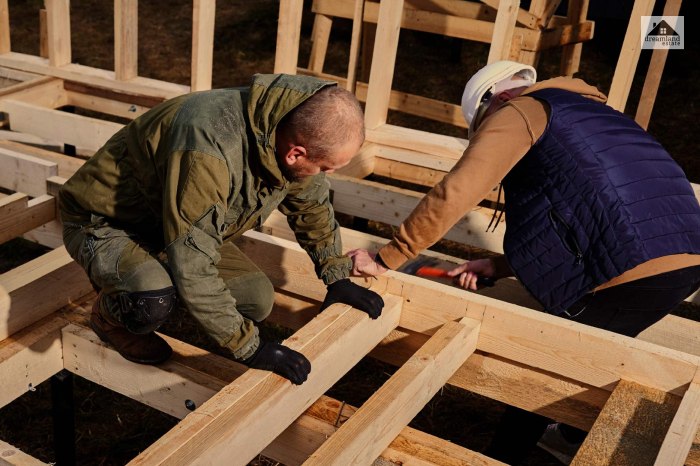
In the world of construction, a floor joist is a structural member of a concrete or wooden floor. It is typically 2 inches by 12 inches by 18 inches (51 by 305 by 460 mm) in size and spaced 16 inches (406 mm) in the center.
You might be thinking that it is simply a wooden plank. But well, that is not the case.
A floor joist is not just a plank of wood. Rather, it is engineered to handle the weight of the floors above it. Floor joists are made out of hardwoods like cedar, oak, and walnut, and they are sometimes treated with preservatives like pentachlorophenol (PCP).
All these make sure that the floor joists are strong and durable. This ensures that the material is able to carry the weight and pressure of the floors that lie above it.
Now that you know what floor joists are, it is time for you to learn about the different types of floor joists. Keep reading this article till the end to learn more…
Types Of Floor Joists

In case you were searching for the different types of floor joists, I have the answer for you.
There are two main types of floor joists: load-bearing and non-load bearing. Let us take a look at them in a greater detail:
- Load bearing floor joist
A load-bearing floor joist carries the weight of the floors above it. This type typically has square or rectangular cross-sections and is usually less expensive than a non-load bearing type.
- Non-load bearing floor joist
A non-load bearing floor joist does not carry the weight of the floors above it and is typically used for atticaries, dormers, and other uses where you do not need to support the weight of the building above it.
Apart from these two, there are more types of floor joists that you need to know about, they are Solid Number Joists, I Joists, and Open-Web Truss Joist. Keep reading to learn more about them…
1. Solid Number Joists

Solid lumber floor Joists are closed planks, usually made of old wood. Their range is affected by various factors such as types, board size, distance, and deviation. Solid Lumber Joists in the work area are still common, but wood supplies are depleted, and using young wood on a beam can damage the wood.
2. I Joists
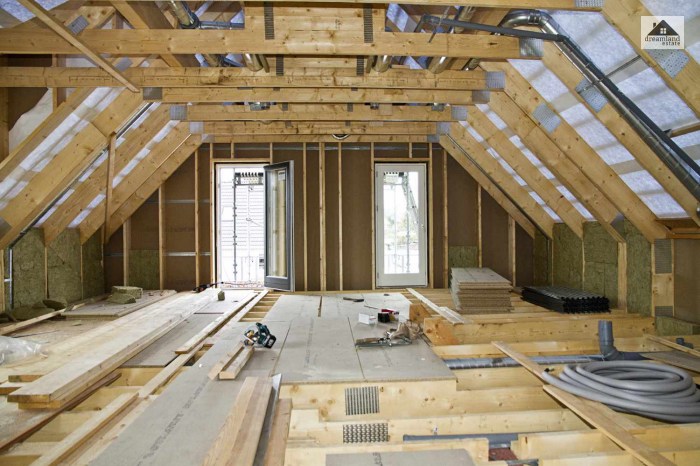
The flange material is usually laminated veneer (LVL) or fine lumber and the strip is made of plywood or OSB. The robust combination of structural elements results in a versatile, economical frame element that is easy to install in residential and light commercial projects.
3. Open-Web Truss Joist

These joists offer more advantages than other types of joists, such as range of depth, longer span, and load-carrying capacity. Open-Web Floor Truss Joist has low moisture capacity and shrinks less.
How does a floor joist work?
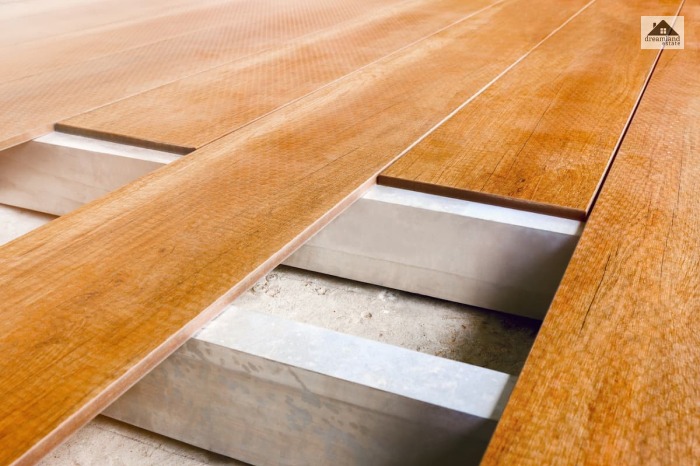
Now that you know what a floor joist is and what the different types of the same are, it is time for you to learn about how it works and why you need it. Keep reading this part of the article till the end to learn more…
Floor joists are designed to resist compression, shear forces, torsion forces, Bs loads, winds, Earthquakes and temperatures up to 500 degrees Fahrenheit (260 degrees Celsius).
They are also designed with openings that allow water and air to flow freely around them so they don’t rot. This allows your concrete or wooden floors to dry quickly if there’s ever an flooding event.
In other words having a floor joist makes it easier for you to ensure that the overall health and condition of the house or the building is better for a longer time. It makes the structure much stronger than you think it can.
Floor Joist Pros And Cons: What Is God And What Is Not?
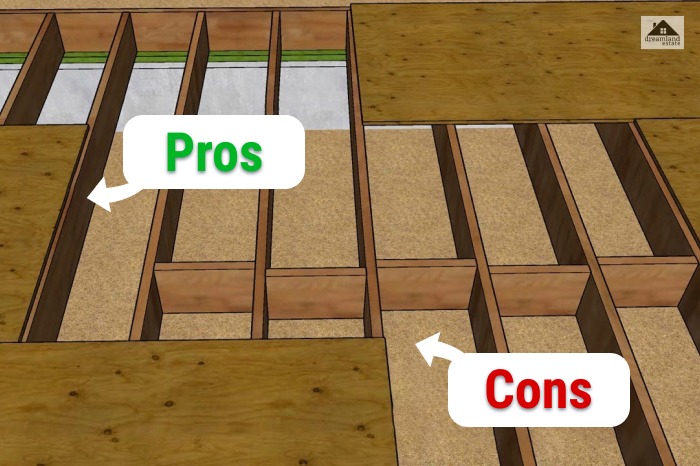
Before you leave, it is important that you read a little about what are the good parts and the bad parts of having a floor joist, here are some of the advantages and disadvantages of having a floor joist for your house.
Pros
- The floor joist can bear the live load, Dead load, and Impact load.
- The installation process is more affordable.
- These are very efficient in supporting the structure.
- They are vertical members and act as beams to transfer the load to the ground.
Cons
- Floor joists have limited options in terms of design and model.
- They are relatively heavy when compared to other trusses.
- They require support from walls, columns, and beams.
- These are not preferred for large areas.
Floor Joist Spacing and Size
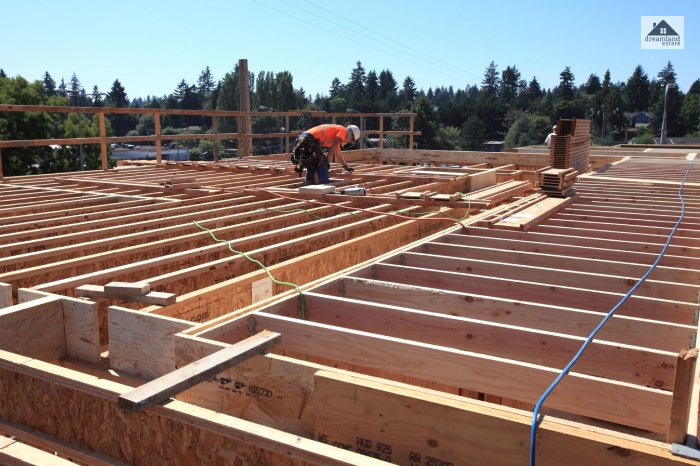
Did you think that it was over? Well, not really!
I have something for you that will make the task of finding and getting yourself the best floor joist much easier. Here is the list of the standard size and spacing of the floor joist that you must keep in mind while getting yourself one for the house:
| Floor Joist Span (Feet) | Floor Joist Standard Size | Spacing (Inch) |
|---|---|---|
| 6, 7 & 8 | 2×4 | 16 |
| 10′ | 2×6 | 16 |
| 12′ | 2×6 | 12 |
| 15′ | 2×8 | 16 |
| 16′ | 2×8 | 12 |
| 18′ | 2×10 | 16 |
| 20′ | 2×10 | 12 |
| 24′ | 2×12 | 16 |
| 25′ | 2×12 | 12 |
Bonus: Replacing A Floor Joist!
Here is a small video of the entire process of replacing floor joist. Take a look at it:
Wrapping It Up!
Floor joists are the structural members of a floor. They are located between the subfloor and the deck, and connect one tier of floor to another. They provide lateral stability and contribute to the strength of the entire building. There are various types of floor joists that you can use for your house and lots of them have been defined in this blog above.
In case you were searching for information related to floor joist, I hope that this article has been of help to you, for there are any other queries related to the same, please feel free to let me know.
All that you need to do is scroll down till you reach the bottom of the page. Then leave your suggestions and doubts in the comment box below. And I will be there to answer them for you as soon as possible.
Read Also:









